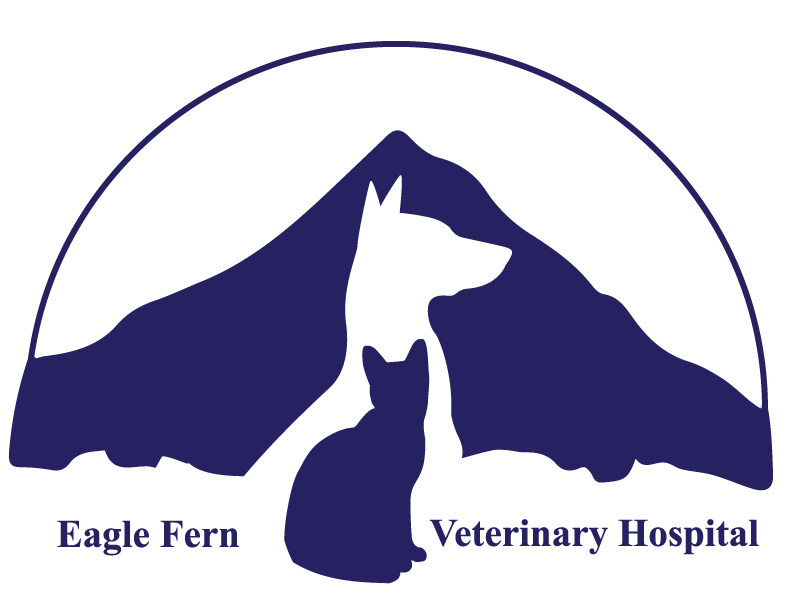|
 Dental Home Care Dental Home Care
Caring for your pet's teeth should start right away, ideally as a puppy or kitten. If your pet is older it is never too late to start! Over 85% of pets over the age of 2 years have periodontal disease. Once tartar has built up on the teeth it needs to be professionally removed. After cleaning, daily dental home care will help decrease the amount of tartar build up, helps freshen your pet's breath and reduces the risk for heart, liver and kidney disease. Brushing your pet's teeth does most of the cleaning. Daily brushing is best or at least 3 times a week. Using other dental care products approved by the Veterinary Oral Health Council with brushing will increase the effectiveness of the home-care program. Dental home care may increase the time between teeth cleaning procedures; however a majority of pets still need their teeth cleaned yearly.
EFVH recommends that you commit to one of these levels of dental care:
Gold Standard Dental Care - Daily Teeth Brushing plus great or good dental care products
Tooth Brushing - removes the daily accumulation of plaque from the teeth before it becomes tartar
OraVet Plaque Prevention Gel -a weekly application prevents plaque from adhering to teeth
Great Dental Care - Hill's Prescription T/D Diet, Purina DH Diet, Royal Canin Dental Diet, Hill's Science Diet Oral Care, Iams Chunk Dental Defense Diet, Eukanuba Adult Maintenance Diet, Healthymouth anti-plaque gel, oral spray and water additive
Good Dental Care - Purina Veterinary Diets Dental Chews, Greenies, HealthiDent, Bright Bites, Checkups Chews, CET Chews/treats and Friskies Cheweez Beefhide Treats
Avoid natural bones, cow hooves, pig ears, hard nylon chew toys and ice as these may break your pet's teeth!
Brushing your Pet's Teeth
1. What age to start? As soon as possible, 8-12 weeks old is best. Brushing once or twice weekly will help them become familiar with the procedure. Stop using a brush while your pet is losing its baby teeth from 3-6 months of age for the mouth may be sore. Once all the permanent teeth are in you can start brushing again.
2. The first step is to work with your pet's mouth. Make it fun for both of you?use a lot of love, praise and rewards. Practice at the same time each day so you and your pet get into a routine. Start by handling the muzzle and tickling the lips and soon you will be able to rub the teeth and gums with your finger. Dip your finger in CET pet toothpaste (available in meat, fish or vanilla mint flavors) or water, flavored with garlic or bouillon for dogs or tuna juice for cats and allow your pet to taste it daily. They will soon look forward to this treat.
3. Start slowly with a washcloth or gauze wrapped around your finger or finger toothbrush flavored as above to gently rub the teeth and gums. Focus on the gum line, start at the front of the mouth, then move to the back upper and lower teeth and gum areas. Rub the teeth and gums in a circular fashion. Do this twice daily for two weeks and praise your pet frequently during the procedure.
4. Next brush the teeth. Use a brush specially designed for pets or a very soft human brush to brush the teeth. Use CET flavored toothpaste, garlic water or tuna juice for cats. Apply the toothpaste between the bristles instead of on top of the brush. Place the brush bristles at a 45 degree angle to the gum line. Move the brush gently in a circular pattern over the outer surface of the teeth. Brushing the tongue side of the teeth is less critical. Be sure to gently place the bristle ends into the area at the base of the tooth as well as into the space between the teeth. Ten short back and forth motions should be completed over 3-4 teeth at a time, then move the brush to a new location. The process should take a few minutes. Brushing daily (best) or at least every other day prevents plaque buildup.
You can review online demonstrations of tooth brushing:
o cats - http://www.partnersah.vet.cornell.edu/pet-owners/cat-teeth
o dogs - //www.youtube.com/watch?v=nbi2Fsj95Ik
5. Apply OraVet Plaque Prevention Gel weekly to minimize tartar buildup.
| 
